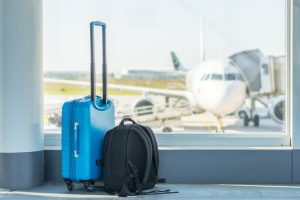Get a discount on your travel with Air Canada!
You can book your flight for SIOP 2023 with the below promotion code. You have to access aircanada.com and enter your promotion code in the Promotion Code Box.
Promotion Code: N68GZWB1
Applicable Rules
- The booking is to be made to the following city: Ottawa, YOW (CA)
- The travel period begins Wednesday, October 04, 2023 and ends Saturday, October 21, 2023.
- Travel is valid Monday, Tuesday, Wednesday, Thursday, Friday, Saturday, Sunday.
- For North America’ 5% applies on standard fares, 10% on flex fares & higher. For International Travel’ 10% on standard fares & higher
Centrally located with excellent air and transportation links, Ottawa is a premier Canadian meeting and convention destination any time of the year.
Getting to Ottawa
Nestled at the junction of three rolling rivers and bordering the provinces of Québec and Ontario, Ottawa is one of the world’s most beautiful capital cities. Located at a four-hour drive north-east of Toronto and two hours west of Montreal, Ottawa is easy to get to by car or by train at any time of year. The Ottawa Macdonald-Cartier International Airport is also located just 20 minutes from downtown Ottawa, offering more than 130 non-stop flights daily to more than 50 destinations in Canada, the United States and European centres out of its state-of-the-art terminal. With so many transportation options available, getting here is easy!
By Plane
Located just a 20-minute drive from downtown Ottawa, the state-of-the art Ottawa International Airport serves airlines offering flights to most major cities in Canada, the United States and Europe with seasonal services to the Caribbean and South America. It offers more than 110 daily non-stop flights to more than 40 domestic and international destinations.
Taxis, car services and car rentals are located just steps outside the airport. Full accessible public transit to downtown Ottawa is also available with OC Transpo bus route 97.


By Road
The major highways in the Ottawa area are the 417 (also known as the Queensway), 416, 174, 7, 16 and 31 in Ontario; and the 148, 50 and 5 in Quebec. When heading east on the 417, the point in which the lanes split into two directions, continue east (this is commonly known as ‘The Split’).
The speed limit on major highways (417, 416, 174) is 100 to 110 km/h (approximately 62 to 68 mph). The limit on other highways (7, 16, 31) and most rural areas is 80 km/h (50 mph). In the city, the speed limit is generally 50 km/h (30 mph) unless otherwise stated. The limit on the 148 in Quebec varies between 50, 70, and 90 km/h (between 30, 43 and 55 mph).
By Train
Convenient, comfortable and affordable, Canada’s passenger train service – VIA Rail – is a great travel choice that offers numerous daily departures to Ottawa from all major cities in southern Ontario and southern Quebec. Ottawa’s Central Station is just minutes east of downtown and a satellite VIA Rail station is located in the west end of the city at Fallowfield-Barrhaven.
Approximate travel times to Ottawa:
- Toronto – 4.5 hours
- Montreal – 2 hours
- Kingston – 2 hours

Getting around the city
Getting around Ottawa is fairly straightforward. Public transport is safe and it is easy to travel from one corner of the city to another.
Ottawa has the infrastructure in place to make cycling and walking around the city centre feasible for residents.
Public transport in Ottawa consists of an extensive bus network and the city’s light rail system, known as the O-Train. OC Transpo is the company that oversees transport in Ottawa.
OC Transpo operates an integrated ticketing system. Single tickets can be bought on board buses or in bundles of six at O-train stations or local stores. Single tickets allow commuters to travel on any O-train or bus service and transfer between services for a period of one and a half hours. Single fares are relatively expensive so expats who plan on using public transport regularly will save money by purchasing daily, weekly or monthly passes.
Buses
OC Transpo has a fleet of more than 1,000 buses that operate on over 200 routes. Travelling by bus is a comfortable and convenient way to get around Ottawa and the bus network tends to cover many of the suburbs that are not in easy reach of an O-Train station.
The frequency of bus services in Ottawa ranges between 20 and 30 minutes, depending on the particular route and time of day. Frequency is usually reduced in the late evenings and on Sundays.
O-Train
The O-Train is a light rail transit service which complements Ottawa’s extensive bus network. While the O-Train network does not cover as much ground as the bus network, the major advantage of using it is that it is isolated from road traffic and so often gets to a destination much faster.
The O-Train consists of just one line which runs from Greenboro to Bayview, stopping at a number of stations along the way. Trains are fairly frequent and stop every 10 to 15 minutes. A second line is currently under construction and will open an east-west route.
Taxis are readily available in Ottawa’s city centre and can easily be hailed from the side of the road or found at a designated taxi rank. For those travelling anywhere from the suburbs, it is best to pre-book a taxi by phoning ahead of time.
All taxis in Ottawa must have a working meter and charge a base fare and then a set rate per additional kilometre. Most taxis have credit card facilities but it is advisable to have cash available for shorter journeys.
You will find that most cab drivers know their way around Ottawa’s city centre very well. However, passengers may need to provide more specific instructions if they plan on travelling to a suburban location.
It is worth noting that Ottawa-registered taxis are not permitted to pick up customers from the side of the road on the Quebec side and the same applies to Quebec cabs in Ottawa. However, it is possible for those living in Quebec to pre-book a taxi in Ottawa and vice versa.
Ottawa is a cyclist-friendly city with over 105 miles (170km) of cycle pathways, making getting around Ottawa by bike relatively easy. Some cycle lanes are shared with motorists and others with pedestrians. However, cycling is fairly safe in Ottawa and motorists are generally aware of cyclists on the road.
Travelling on public transport with bikes is accommodated for as bike racks are available on all buses and O-Trains in the city. While many regular commuters invest in bicycles of their own, they can also use one of Ottawa’s bike-sharing schemes.
Driving is fairly easy in Ottawa as the road infrastructure is of an excellent standard and signage is very clear. However, parking is limited and hard to find in the city centre and parking fees are high. For these reasons, most of Ottawa’s residents opt to use public transportation rather than drive on a daily basis.
